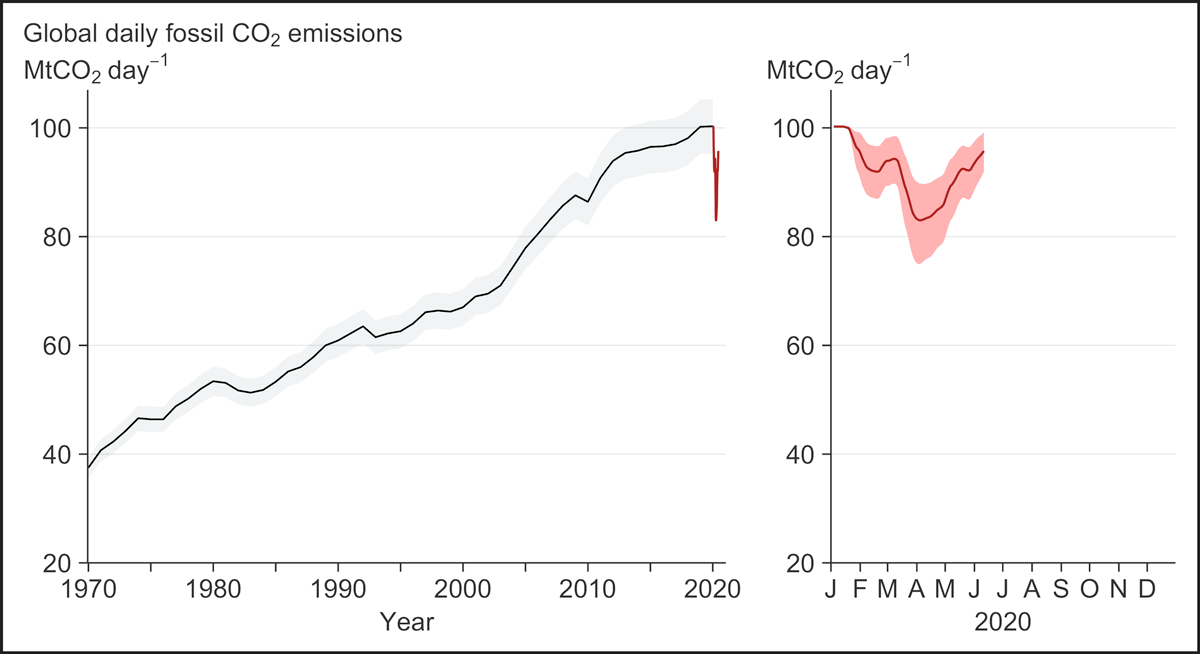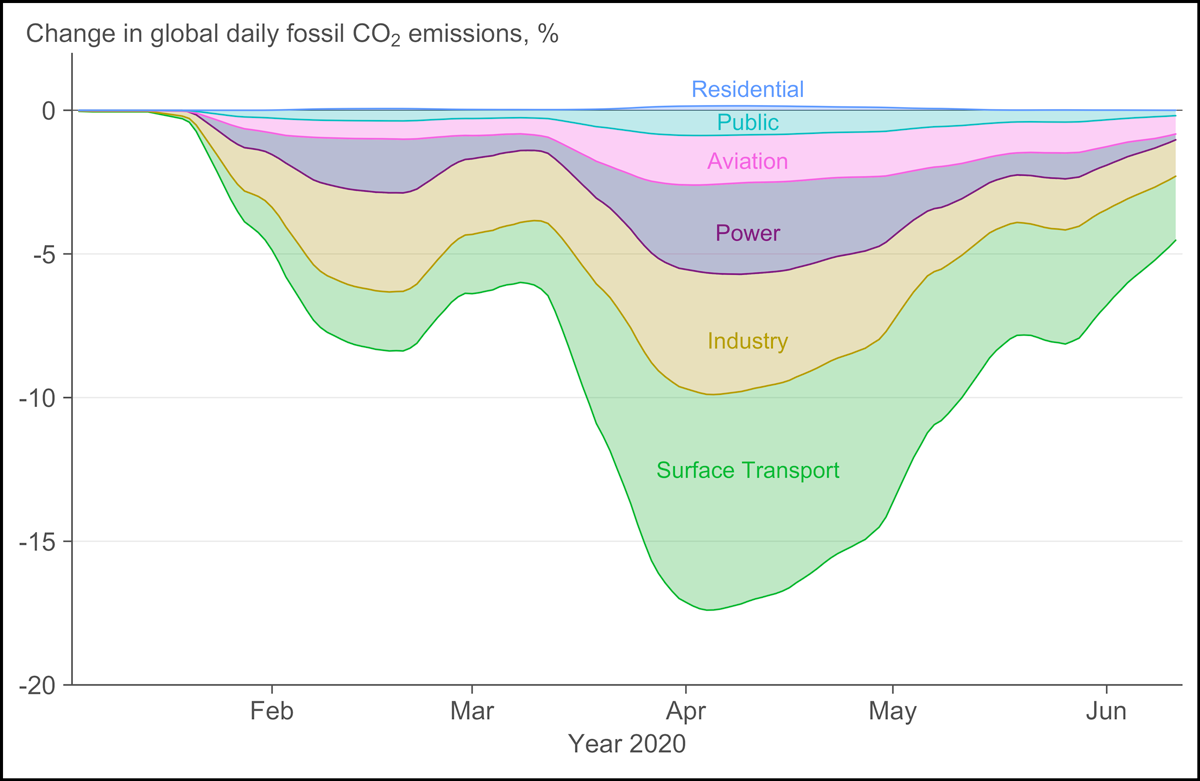Daily carbon dioxide emissions are spiking again as economies roar back to life from pandemic lockdowns. Scientists worry that countries may miss their chance to reboot greener economies unless governments embrace long-lasting structural change.
Initially, emissions plummeted when governments implemented confinement measures to stop the spread of the novel coronavirus. Last month, a team of scientists released an estimate of daily carbon emissions from January through April. Global emissions decreased “massively,” said lead researcher Corinne Le Quéré, particularly in April, when the world reached its lowest daily emissions level in 15 years.
Two months later, emissions are rebounding toward prepandemic conditions as countries reopen. Some countries have introduced green recovery plans, while others, like the United States, are rolling back environmental protections.
Economic downturns often coincide with lower carbon dioxide emissions, but the effect disappears when economies bounce back and relies heavily on how governments implement stimulus plans. Global carbon dioxide (CO2) emissions dropped 1.4% in 2009 during the global financial crisis, then rebounded a whopping 5.1% in 2010 after aggressive government efforts stimulated national economies. Since then, emissions have increased by about 1% per year.
“The big question, the one that matters hugely for the direction of carbon emissions in the future, is what our world governments are going to do this time around,” Le Quéré said. “We need organized, structural change to tackle climate change.”

Fewer Vehicles, Less Carbon
Daily emissions as of 11 June were around 5% below prepandemic levels and “decreasing rapidly,” according to a technical report presented by the authors. The team has projected that annual emissions will be 4%–7% lower this year than last.
Surface transportation—including cars, buses, trucks, and shipping—had the largest impact on emissions reductions during lockdowns. On the lowest-emission day, 7 April, 43% of the drop came from fewer vehicles burning fuel. Other substantial decreases came from less energy use in power and industry.
By contrast, aviation had the largest relative anomaly of any sector: Emissions fell by 60%, and “the sector literally collapsed during the lockdown,” Le Quéré said. In the big picture, however, aviation accounts for roughly 3% of annual CO2 emissions, so the reduction was dwarfed by decreases in other sectors.
Emissions estimates come from a grab bag of online data. Carbon dioxide emissions are usually reported years after they occur, so creating a near-real-time estimate was novel. The team members pulled publicly available data on personal mobility, home energy use, traffic congestion, flight departures, steel production, and other proxies to re-create activity in six economic sectors using 577 individual time series. They then calculated the emissions from each and their relative drop during the restrictions. The scientists published their results in the journal Nature Climate Change in May.
Gregg Marland, an adjunct research professor at Appalachian State University who was not involved with the study, called the analysis “creative.”
“It takes the United Nations two and a half years after a year ends to get questionnaires back from all countries on energy use, from which to calculate CO2 emissions. These folks dug up scraps of information from many sources to produce rough estimates of emissions within 2 weeks of the time period of interest.”
“Call me in 3 years and I will give you a good estimate of how close they came,” Marland added. “I am betting that they are close enough to be able to draw meaningful conclusions.”

A Postpandemic World
Le Quéré believes the CO2 reductions are short-lived, as the recent data show. “As soon as the confinement eases, then they come back up again,” she added. “Nothing has changed around us. We still have the same roads, we have the same cars, we still have the same heating systems for the other sectors, and the same industries.”
“The changes in emissions during confinement are not structural changes. They are forced behavior changes—they are painful, they are brutal even,” Le Quéré said. Future reductions will rely on positive changes that boost quality of life and create jobs.
How? Le Quéré has some ideas: Invest in green infrastructures, build cycle paths, insulate homes, install heat pumps, install renewable power, and “electrify everything.” Cook vegetarian meals, train workers to renovate homes, and plant more trees. She urges countries to stop investing in fossil fuel infrastructure: no new roads and no more coal plants “if we can help it.”
A University of Oxford working paper that surveyed 231 financial experts suggests that climate-friendly recovery packages make more economic sense, while others argue that prioritizing environmental reforms will leave struggling companies behind.
Geeta Persad, an assistant professor of climate science at the University of Texas who was not involved with the emissions study, said that some new behaviors may stick around after the pandemic, like telecommuting, but they’re not enough to offset carbon emissions.
“The results highlight that individual action alone is not sufficient to achieve climate mitigation goals,” Persad said. “Large-scale shifts in energy production are required.”

—Jenessa Duncombe (@jrdscience), Staff Writer
